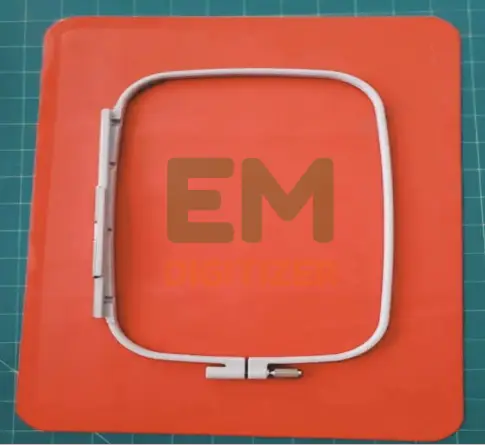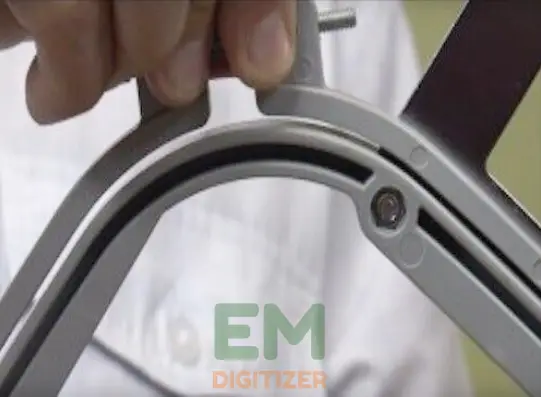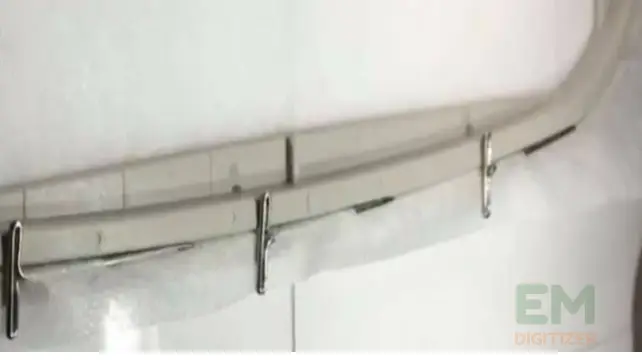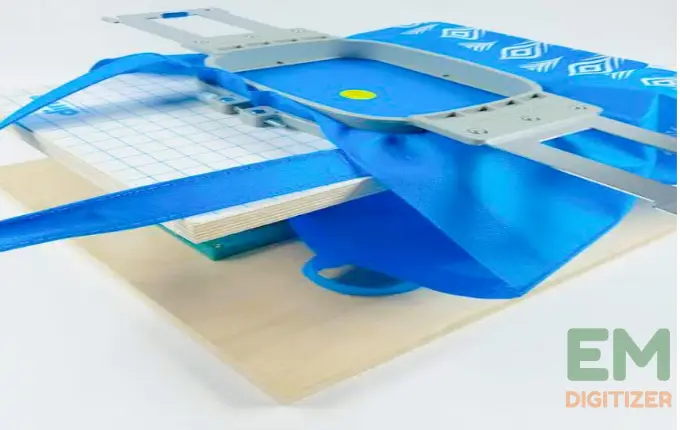A Complete Guidance About Embroidery Hooping – Tutorial, Tips & Aids
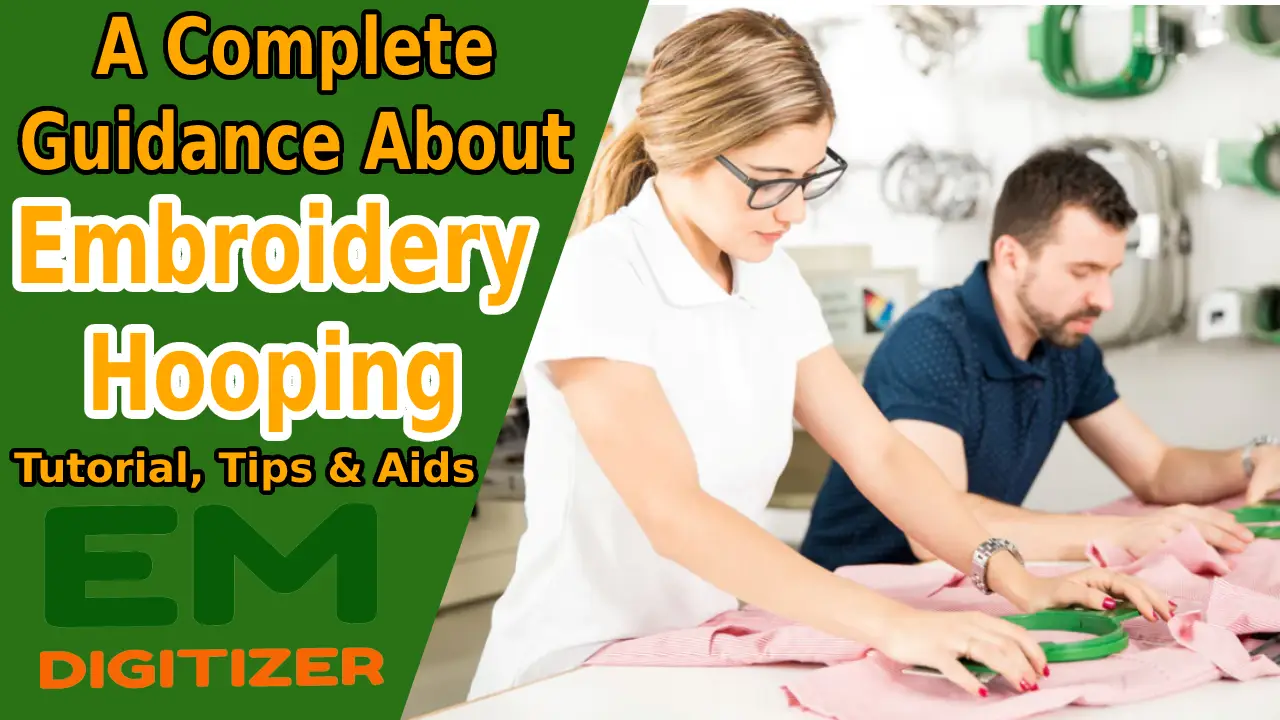
Since hopping is a fundamental step in stitching, you will learn everything you need to know in this post. Moreover, your needlework projects’ appearance will be determined by how well your hoop is. I’ll go over the essential aspects and significance of embroidery hopping, as well as the distinctions between commercial and embroidery hoops, and how to precisely hoop projects with the hints and techniques that will help the process go more smoothly while maintaining the projects’ professional appearance.
Keyword
embroidery hoop
embroidery hoops
embroidery hoop stand
in the hoop embroidery designs
mini embroidery hoop
embroidery hoop sizes
large embroidery hoop
mini hoop embroidery
square embroidery hoop
what size embroidery hoop
wooden embroidery hoops
embroidery hoop mini
magnetic embroidery hoops
diy embroidery hoop
embroidery hoops bulk
nurge embroidery hoops
oval embroidery hoop
small embroidery hoops
dime embroidery hoops
embroidery hoop art
embroidery hoop frame
how to use a embroidery hoop
how to use an embroidery hoop
machine embroidery designs in the hoop
3 inch embroidery hoop
best embroidery hoops
brother embroidery hoops
embroidery hoop crafts
embroidery hoop holder
frame embroidery hoop
framing embroidery hoop
how to finish embroidery hoop
machine embroidery hoops
metal embroidery hoop
michaels embroidery hoop
mini embroidery hoops
standing embroidery hoop
wooden embroidery hoop
3 inch embroidery hoops
bernina embroidery hoops
embroidery hat hoop
embroidery hoop ornaments
embroidery hoop walmart
embroidery hooping station
embroidery hoops hobby lobby
embroidery machine with large hoop
embroidery stand hoop
embroidery wood hoop
hooping for embroidery machine
how to finish an embroidery hoop
large hoop embroidery machine
magnetic embroidery hoop
magnetic embroidery hoops for brother
plastic embroidery hoops
rectangle embroidery hoop
wood hoop embroidery
3 embroidery hoop
brother embroidery machine with 8×12 hoop
bulk embroidery hoops
decorative embroidery hoops
embroidery hoop for hats
embroidery hoop near me
embroidery hoop stands
embroidery hoop wreath
embroidery hoops walmart
finishing embroidery hoop
free in the hoop embroidery designs
large embroidery hoops
magnetic hoops embroidery
mighty hoop embroidery
queen embroidery hoop
tiny embroidery hoops
wooden hoop embroidery
12 inch embroidery hoop
4 inch embroidery hoop
amazon embroidery hoops
brother embroidery machine hat hoop
display embroidery hoop
embroidery display hoop
embroidery in hoop
hat hoop for brother embroidery machine
hat hoop for embroidery machine
how to use embroidery hoop
in the hoop embroidery
in the hoop embroidery projects
nurge embroidery hoop
wood embroidery hoop
wood embroidery hoops
5×7 hoop embroidery machine
6 inch embroidery hoop
brother embroidery machine hoops
displaying embroidery hoops
embroidery hoop decor
embroidery hoop frames
embroidery hoop station
embroidery hoops amazon
embroidery in the hoop designs
embroidery machine hoops
extra large embroidery hoop
finished embroidery hoop
how to hang embroidery hoops
joanns embroidery hoop
magnetic hoops for embroidery machines
magnetic machine embroidery hoops
needles and hoops embroidery
small embroidery hoop
vintage embroidery hoops
10 inch embroidery hoop
14 inch embroidery hoop
18 inch embroidery hoop
2 inch embroidery hoop
4 embroidery hoop
8 inch embroidery hoop
babylock embroidery hoops
best embroidery hoop
black embroidery hoop
If you are looking for embroidery digitizing services, EMDigitizer is one of the best embroidery digitizing companies. Providing all types of embroidery digitizing Services. I recommend you try digitizing services.
Order NowGet Free QuoteTable of Contents
Overview
The technique of embroidery hooping takes a lot of care and time, therefore it is not a simple undertaking. The majority of novice embroiderers find this period to be hazardous for their projects, and as a result, produce untidy embroidery that is later thrown out. When one is trying to hoop stabilizer and fabric but is unable to provide the hoop enough support while working on a slick surface so that the hoop starts rolling around, one may become easily discouraged. The tricky portion of embroidery hopping can be avoided by developing good hooping techniques. One needs to understand the fundamentals of embroidery hopping and how to correctly hoop projects to become proficient at it.
If you want to get knowledge about How to create In-the-Hoop Embroidery Ornament Designs, then you can visit: Hoop Embroidery Ornament Designs
How Are Home-Based Embroidery Hoops Different From Commercial Hoops?
The shape of these hoops is the primary distinction between embroidery hoops used for home-based businesses and commercial embroidery. There is no need to be uncertain when choosing commercial embroidery hoops.
- The shape that the commercial embroidery hoop has is a trait that I find quite attractive. You may find embroidered hoops in various shapes, such as round or circular, in any professional embroidery shop.
- However, some home embroidery hoop designs come in square and rectangular shapes. This is why there are only 5×7 hoops available.
Why Is A Hoop Of Round Shape Preferred Over A Rectangular shape?
Although a rectangular hoop has four corners where the cloth can be held, the straight portions of the hoop are not tightly fastened. The cloth will start to lose its shape and pucker once you begin hooping the design. But with a round-shaped hoop, you can see how evenly the fabric is held and fastened at either end. Additionally, apply equal amounts of pressure to each end of the hoop so that your fabric sticks firmly in place.
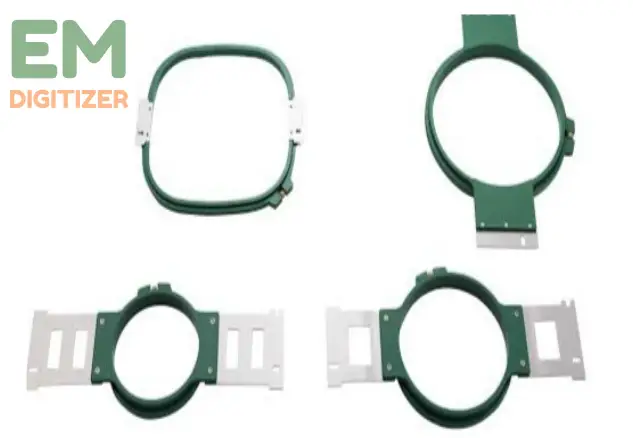
Due to the ability to consistently support the fabric, a circular embroidery hoop is thought to be more sturdy than a rectangular one, which struggles under unequal pressure to offer adequate support to firmly keep the cloth and stabilizer in place. Circular hoops are a common feature of commercial embroidery machines. However, if one plans to do any home-based embroidery, one may need to order from trusted brands.
If you intrested in magnetic hoops, visit our blog How to use Magnetic Embroidery Hoops
Note: But working with magnetic hoops is always a plus point whatever the shape is. It is just because of the magnet that provides sturdy support to the fabric so that it won’t move.
Embroidery Hooping Mistakes
Let’s look at the typical errors that stitchers make when hopping their needlework projects before offering you a comprehensive guide regarding the technique. Once the outcome is revealed, they become discouraged.
Visit our blog to know about main Embroidery Mistakes.
The majority of errors:
- Distortion occurs when the cloth is pulled out.
- Incorrect hooping size selection concerning the project and machine
- Hooping that is too loose or tight
- Embroidery items hooped in the incorrect direction
- You may begin hooping two layers and unintentionally sew them together.
As a result of incorrect embroidery hooping errors:
- Top thread breakage and bird nesting of bobbin thread are the results of improper embroidery hooping.
- Distorted pattern
- Faulty stitch alignment
- Fabric with persistent wrinkles
- The embroidered materials had puckering and holes in them.
Step By Step Tutorial Of Embroidery Hopping
Here, I’ll give a few simple instructions that will greatly assist you in the embroidery hooping process and help you produce embroidery items that are of professional caliber.
Step 01-Prepare Your Hoop And Material Fabric
You must first fold a piece of the material you wish to embroider in half by applying pressure on it before starting embroidery hooping. This phase enables you to take into account the folded material’s thickness and provide assistance in the adjustment of the necessary distance between the two halves of the hoop. The reason is that if you wish to adjust the hoop to the correct size of the material, you cannot proceed with this step while you have already hooped the fabric (Visit our blog to know about the best embroidery fabrics)
Hoop burn could occur on the fabric as a result. Take the hoop and drag it to the corner where the adjustable knobs are located to prevent making this mistake. To release each hoop, you can adjust it as tight or loose as you like. This measurement would be equivalent in size to determine the size of folded material’s thickness.
Step 02- Start Hooping
In the next phase of the embroidery hooping instructions, you will now place the bottom half of the hoop on the table with the corner of the adjustment knobs facing you. The fabric and stabilizer (here is the complete guideness about embroidery stabilizer) should then be placed appropriately on the top part of the hoop that is set up on the table in front of you. Place the top half of the hoop and twist it down while holding the bottom half of the hoop in a certain position. You could feel a bit reluctant if your top is already adjusted, but do not interfere with the top hoop to modify its position.
Note: As was previously stated, readjusting the fabric after it has been bounced is not advisable because it will take a lot of your time. Avoid this mistake by picking up the hoop and tightening it by merely pushing the corners. It will get sufficiently compressed to be fit for use in the machine.
Now the instructions on embroidery hooping have concluded. To begin hooping embroidery projects, follow these instructions actively.
Hooping Tips and Techniques
You now have sufficient knowledge of embroidery hopping and hoops’ forms to utilize them in both a home-based and professional embroidery enterprise. Let’s look at some embroidery hooping suggestions that will assist you in performing the hopping of different embroidery tasks.
Here is a list of reasons why we are using embroidery hopping station, visit our blog to learn about it.
1- First consider the right hoop size
To further clarify this claim, I’ll provide the advice that the optimal results can be obtained by utilizing a hoop of the same size as your embroidery pattern. For instance, you must use a 4 by 4 hoop, if your embroidery design is 3.5 x 3.8. Unfortunately, even though this is the easiest step to follow, the majority of individuals don’t bother.
2-Use Pins to Hold the Fabric at the Place
When dealing with rectangular hoops, it is advised to use T-pins, which are intended solely for attaching fabric and stabilizer to hoops. The usage of these pins may result in leaving holes in the cloth, so it is not necessary to utilize this approach throughout the hoop. After successfully hooping the material, place the pins in the straight portions of the rectangular hoops. Because these regions are not properly secured to firmly hold the stuff. However, using pins allows you to prevent the fabric from becoming looser when you pull it.
3- Use Of Double Sided Tape
For embroidery hoops, double-sided tape is advised if you’re working with elastic or sheer fabrics. As you might know, the stabilizer is used to strengthen the plastic portion of the embroidery hoop when it is being used. When the plastic in the inner half of the hoop fails to grip the fabric, puckering may occur. When a piece of fabric is firmly hooped while the other side is slippery, distortion results.
Here is a tips and trick for puckering preventation, visit our blog to learn about it.
Use double-sided tape on the inner side of the hoop to prevent this mistake and stop the fabric and stabilizer from rolling around. The best part about utilizing double-sided tape is that it can be used for a variety of embroidery hooping tasks simultaneously. If it loses its adhesion, you can easily alter it or remove it without leaving any traces on your project.
4-Avoid Over Straining The Hoop
After hooping your fabric, don’t make any forceful attempts to tighten the hoops. The majority of beginners don’t take the time to do hoops precisely, but when they notice that their fabric is loosening, they try to tighten the hoops after getting upset by turning knobs and screwdrivers, which results in the burning of material. Instead, carefully grip and tug the cloth protruding from the longer side of the hoop. Simply take the hoop and squeeze the corners inward until they are snug enough to go into a machine. The hoop should not be overtightened or over-loosened.
Role Of Embroidery Hooping Aids
Owning your embroidery hooping station, main boards, and systems is the greatest alternative for giving consumers support during the embroidery hooping process, making it simpler and more trouble-free.
- These tools make it easier for people to easily hoop any kind of solid object.
- Ensure that the embroiderers who run their embroidery businesses receive enough support.
- Allows for the embroidery hooping of numerous projects at once.
Conclusion
This article is all about embroidery hooping tutorial guides, tips, and tools that help users, especially newcomers, navigate the challenging process of hooping. Before jumping into this difficult phase, it is advised to stay for a bit and study needlework hopping to avoid regretting it later. Because the proper hooping of fabric and stabilizer affects how your embroidery projects turn out. And in the worst case, one slip-up throughout the hoops process will render all of your efforts useless.
The shape that the commercial embroidery hoop has is a trait that I find quite attractive. You may find embroidered hoops in various shapes, such as round or circular, in any professional embroidery shop. However, some home embroidery hoop designs come in square and rectangular shapes. This is why there are only 5×7 hoops available.
- Distortion occurs when the cloth is pulled out.
- Incorrect hooping size selection concerning the project and machine
- Hooping that is too loose or tight
- Embroidery items hooped in the incorrect direction
- You may begin hooping two layers and unintentionally sew them together.
1-First consider the right hoop size.
2-Make use of double-sided tape.
3- Use T-pins to hold the fabric in place.
4-Do not leave the hoop over-tightened and over-loosen it.
Hooping aids such as embroidery hooping stations, main boards, and systems are the greatest alternative for giving consumers support during the embroidery hooping process, making it simpler and more trouble-free.
If you have any questions leave the comments or you can visit our social channels for more updates regularly. We provide embroidery digitizing services if you need digitizing services feel free to contact us or email us.
